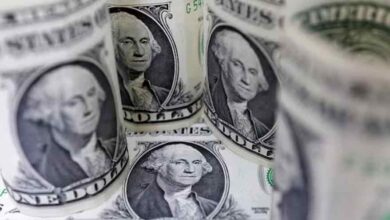The U.S. dollar advanced on Friday after Israel said it had launched strikes on Iran, sparking a rush back into the currency and a rally in other safe-haven assets including the Japanese yen, the Swiss franc and gold.
Israel said early it had struck Iranian nuclear targets to block Tehran from developing atomic weapons, and Iranian media and witnesses reported explosions including at the country’s main uranium enrichment facility.
U.S. and Iranian officials were due to hold a sixth round of talks in Oman on Sunday on Tehran’s escalating uranium enrichment program. Israel’s ambassador to the United Nations said the government’s determination to strike Iranian targets was an independent decision.
“The geopolitical escalation adds another layer of uncertainty to already fragile sentiment,” said Charu Chanana, chief investment strategist at Saxo.
“If tensions rise, particularly with any threat to oil supply routes, the risk-off mood could persist, keeping upward pressure on crude and haven assets.”
An index that measures the dollar against six other currencies rose 0.4% and was last at 98.07.
The Japanese yen and the Swiss franc , both also traditional safe-haven currencies, rallied 0.3% and 0.4% respectively against the dollar.
The dollar’s biggest gains were against currencies positively correlated to risk sentiment, the Aussie dollar and the New Zealand dollar , which both weakened 0.9%. The euro reversed a four-day rally to trade down 0.3% at $1.155.
Investors also snapped up U.S. Treasury bonds, sending the yield on the benchmark 10-year note down by about 4.7 basis points to a more than one-month low of 4.31%. Gold prices jumped 1.3% to their strongest since early May.
Friday’s developments created more uncertainty for investors who have been navigating a wide range of concerns around the outlook for global trade and inflation this week.
Despite the day’s gains, the dollar index was trading close to its lowest level since March 2022 that it hit earlier in the week, as a U.S.-China trade truce reached earlier in the week offered little clarity and U.S. President Donald Trump said he would outline unilateral terms of trade with other economies in the days to come.
The dollar index is on track for a weekly decline of over 1%, its biggest drop in nearly a month, and is set to mark losses against the yen, the Swiss franc and the euro.
“Geopolitical noise may temporarily distort the dollar downtrend and temporarily weigh on risk proxies especially heading into the weekend,” said Christopher Wong, a currency strategist at OCBC.
Two inflation reports showed price pressures were contained, fuelling expectations of more aggressive interest rate cuts by the Federal Reserve. But analysts have warned of the risk of tariffs filtering into prices in the coming months.
Following Israel’s strikes, crude prices , jumped more than $9 on fears of supply disruptions in the oil-rich region, which could also add to price pressures.
Later in the day, investors will assess the University of Michigan’s preliminary survey for a look at how consumers have fared this month. Final consumer inflation reports are also expected out of Germany, France and Spain.
Next week brings a host of central bank decisions from the Fed, the Bank of Japan and the Bank of England that could offer investors more clarity on the path ahead for interest rates.
The risk-off mood also hit cryptocurrencies. Bitcoin eased over 2% to $103,938, while ether prices declined over 5.5% to $2,496.







